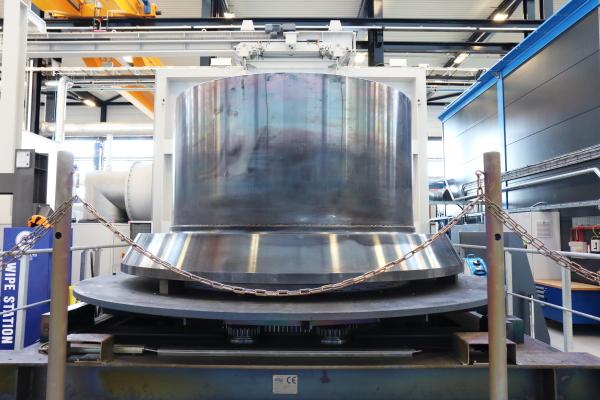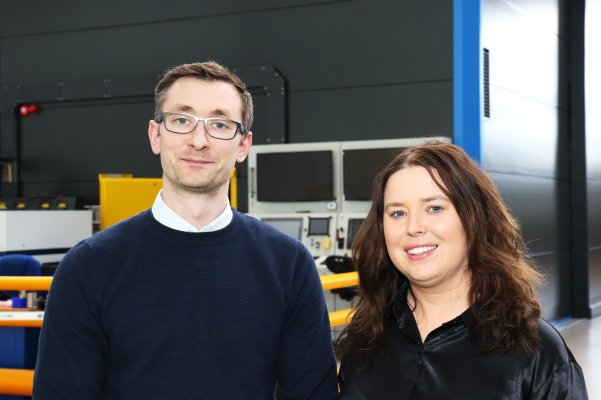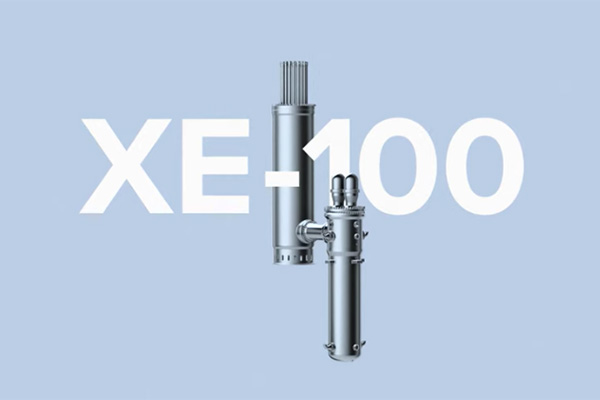An international collaboration has demonstrated how electron beam welding can help slash the production time and cost of reactor pressure vessels for a new generation of small modular reactor.
Over the past three years, the Nuclear AMRC has worked with EPRI (Electric Power Research Institute) in collaboration with the US Department of Energy to develop new manufacturing and fabrication methods which could accelerate production and reduce costs for pressure vessels and other large nuclear components.
The ongoing project, which received second-phase funding in June, aims to demonstrate that small modular reactor (SMR) pressure vessels can be manufactured in less than 12 months, from the current production schedule of around three years.
One potentially game-changing technology identified by EPRI is electron beam welding, which allows multiple arc welded passes to be replaced by a single deep-penetration weld.
“Electron beam welding provides the opportunity to cut costs by 40 per cent compared to conventional technologies,” says Marc Albert, senior technical leader for EPRI’s advanced nuclear technology programme. “Collaborative projects like this one are addressing the most urgent challenges facing nuclear power and better positioning the industry to meet society’s changing energy demands.”
The thick-section welding required to join wrought vessel sections is often a bottleneck in pressure vessel fabrication. Conventional arc welding techniques, such as submerged arc welding, are labour-intensive and time-consuming, involving multiple weld passes with periodic inspections. Reducing this time while meeting the required quality standards would help cut the overall production time and costs.
Electron beam welding provides a number of distinct advantages over conventional techniques, says Dr Will Kyffin, Nuclear AMRC head of welding and materials.
“It’s about 10 times faster than traditional arc welding, providing considerable cost savings,” Kyffin explains. “The heat affected zone is minimal, due to the reduced heat input. And since filler metals aren’t required, specific heat treatments can be employed to optimise the alloy’s grain structure, restoring the fracture toughness comparable to that of the base material.”
Removing filler metals also eliminates any problems with filler metal embrittlement. “Effectively removing the presence of the weld potentially eliminates the need for costly in-service inspections, and reduces outage times and worker exposures,” Kyffin notes.
To demonstrate the feasibility of electron beam welding for pressure vessels, the Nuclear AMRC team carried out extensive tests and trials in the centre’s giant Pro-Beam K2000 chamber. Believed to be the largest electron beam chamber available for collaborative R&D anywhere in the world, the K2000 boasts a range of advanced features for joining and additive manufacturing.
Initial work focused on process development to ensure the required weld properties could be achieved. The welding parameters were then used to join sections of a two-thirds scale pressure vessel, based on the upper and lower assemblies of a design from US reactor developer NuScale Power.
The project successfully demonstrated that electron beam welding can be applied to thick section circumferential welds. The team joined two shells, with outside diameter of 1800mm and wall thickness of 80mm, in just one hour – using conventional techniques, this would take around 40 hours in process time alone.

The potential time savings will be even greater for larger components or thicker walls, Kyffin notes.
One challenge in thick-section circumferential welds is that microstructural defects can arise when the electron beam power is reduced at the end of the process. The team developed a novel slope-out procedure to minimise this risk, and validated the results using both destructive and non-destructive testing methods.
All non-destructive testing on the weld has now been validated against the ASME code requirements, a vital step in getting the process approved for nuclear fabrication.
As well as pressure vessel production, thick-section electron beam welding could be used to produce other components including pressurisers, steam generator shells, headers, valves and turbine discs.
As part of the EPRI collaboration, the Nuclear AMRC also contributed to research into automated cladding and near-net shape manufacturing of pressure vessel components.
The project was funded by the US Department of Energy (DOE), with industrial partners from both sides of the Atlantic including Sheffield Forgemasters, a founding member of the Nuclear AMRC. In June, the DOE awarded an additional $3.4 million funding to support the collaboration for another two years.
“The Nuclear AMRC continues to provide tremendous innovation for this game-changing technology, leading the development and demonstration of electron beam welding for nuclear applications,” says Albert.
Collaborating with UK manufacturers on the project means that the domestic supply chain will be in a strong position to win work internationally as SMRs move into commercial production, Kyffin notes.




